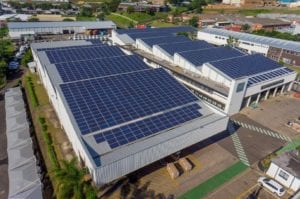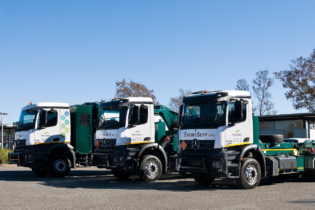South Africa is officially home to one of the country’s first 100 percent carbon neutral truck production sights.
This follows the announcement that MAN Truck & Bus South Africa has converted its Pinetown assembly plant to solar power. The complete truck and bus-chassis assembly plant is now capable of operating entirely off solar energy. According to Heiko Kayser, Head of Production at the assembly plant, “installation of the solar, or photovoltaic system, commenced in August 2014 and was completed in less than six months. “The project forms part of MAN’s global Climate Strategy to reduce carbon emissions at its production sites in Europe, Africa, Asia and South America by 25 percent by 2020.” With its abundant sunshine, Pinetown is a prime location to implement solar energy solutions and Kayser and his team procured expertise from Kwa Zulu-Natal to design and install the new photovoltaic (PV) system.“Prior to rolling out the PV project, we refurbished our entire roofing system at a cost of over R5 million to not only efficiently accommodate the solar panels, but also to install skylights and thermal insulation material to reduce demand for electric lighting and to make our buildings cooler for our operators,” explains Kayser.
Of the 10 000 square-metres of roofing covering all buildings at the plant, 6300 square-meters have been utilised to accommodate the PV installation. The 580kW system is capable of generating approximately 810 000 kilowatt hours (kWh) of power per annum, providing a surplus of energy that can be supplied to the metropolitan (eThekwini) grid. The PV system is linked to a web-based monitoring system that reports daily power consumption as well as electricity-cost and CO2 savings. Furthermore, the online reporting software also delivers exception reports, enabling Solaray, the company that installed the system, to rectify PV system issues swiftly. Solaray is also contracted to clean the solar panels every three months to ensure optimum efficiency.







